PRESENT TENSES

Learning Goals
- Address common errors and misconceptions regarding the use of present tenses, such as incorrect verb conjugations or confusion between different tenses.
- Introduce the concept of present tenses through interactive activities, emphasizing the difference between present simple, present continuous, present perfect, and present perfect continuous.
- Apply understanding of present tenses through personalized and creative tasks, enhancing their practical usage in different contexts.
- Consolidate learning through a creative review activity and reflect on the learning process, emphasizing the practical use of present tenses in real life.
Content
The present tenses in English encompass four main aspects, each used to express different types of actions or states occurring in the present time. Below you will find a summary of each tense.
Present Simple
Used for habitual actions, routines, general truths, and facts. It reflects actions that are regular or unchanging. For example, “She studies every evening.”
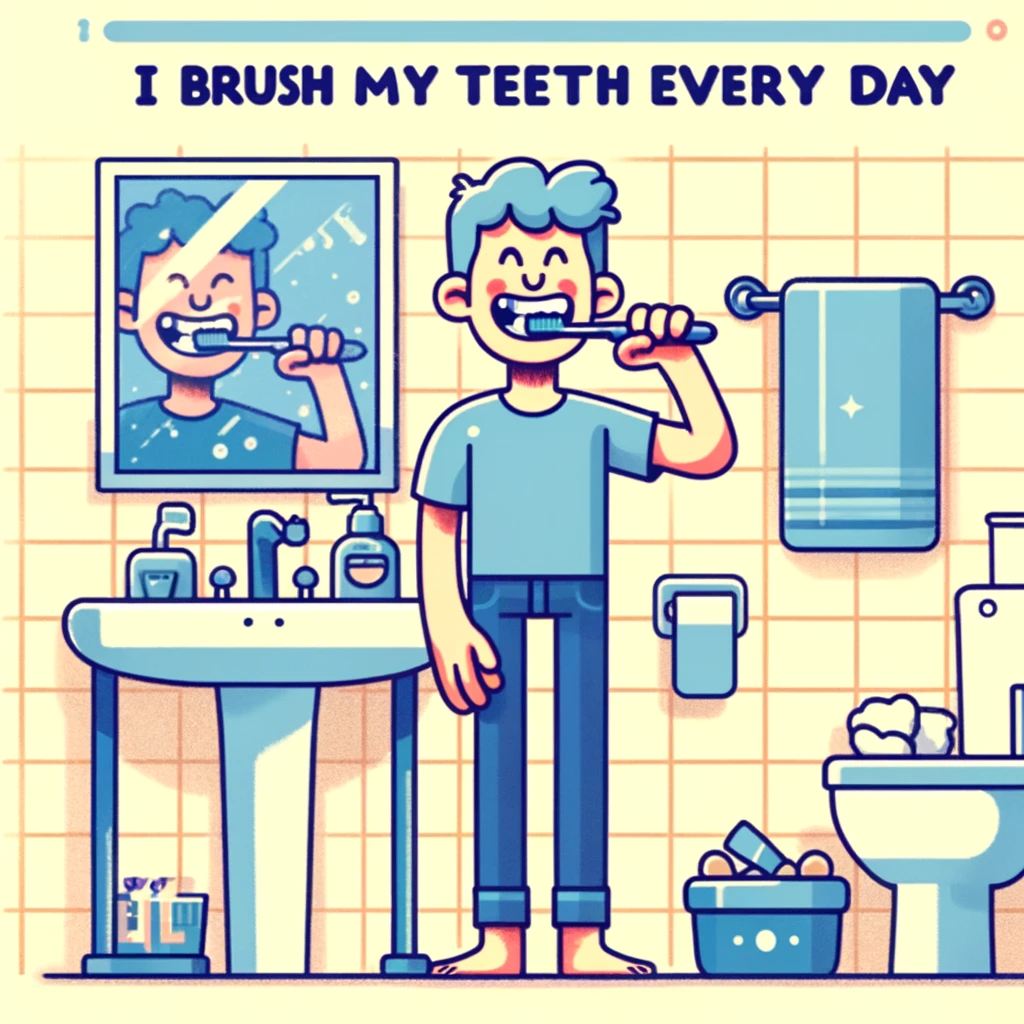
Present Continuous
Describes actions happening at the moment of speaking or current temporary situations. It’s also used for future plans or arrangements. For instance, “They are watching a movie now.”

Present Perfect
This tense connects past actions to the present moment, emphasizing the result or consequence of an action that has occurred at an unspecified time before now. For example, “I have finished my homework.”

Present Perfect Continuous
Focuses on the duration of an ongoing action that started in the past and continues into the present. It highlights the continuity of the action. For example, “He has been reading for two hours.”

Here is a presentation with all the tenses and examples. Check it out!
SPELLING RULES
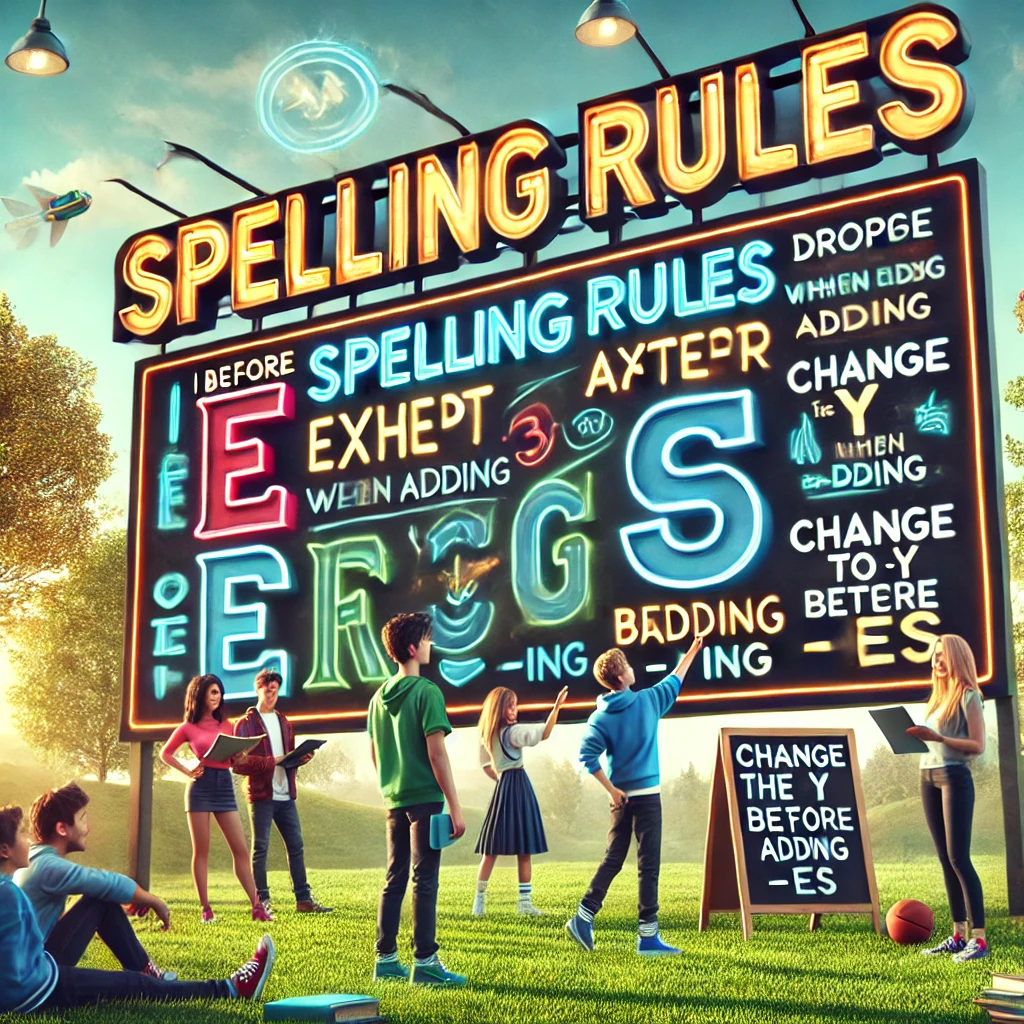
The link below serves as a quick reference guide to the spelling rules for verb transformations in English present tenses. Understanding these rules is crucial for constructing sentences accurately across different contexts and for ensuring grammatical correctness in both written and spoken English.
Click here to access the Chart of Present Tenses Spelling Rules
Learning Activities
Interactive Quiz
We will start with a fun and interactive game in Kahoot to assess your prior knowledge.
Objectives
-With this activity we are going to determine your existing understanding of the different present tenses.
-Pinpoint frequent errors you can make when using present tenses, focusing on verb conjugation and appropriate tense selection.
-The quiz results is going to prepare you for upcoming lessons on present tenses, ensuring that you have a solid foundation before moving forward.
Instructions:
- Go to the Web on your device (smartphone, tablet, or computer).
- Enter the following link: https://create.kahoot.it/share/present-tenses-review/a34edce3-800c-4477-a6a9-686307df7f44
- Have fun!

Time-Tense Correction Challenge
Objectives
You will improve students’ ability to correctly use the four present tenses (Present Simple, Present Continuous, Present Perfect, Present Perfect Continuous) in context.
You will develop your ability to identify and correct errors in tense usage, enhancing your grammatical accuracy and attention to detail.
Instructions
- You will have 10 minutes to correct as many sentences as possible. Submit their corrected sentences before time runs out.
- If you finish fisrt and all of your sentences are correct, you will receive 20 “Krugs”; 2nd position: 10 Krugs; 3rd place: 5 “Krugs”
- Have fun!
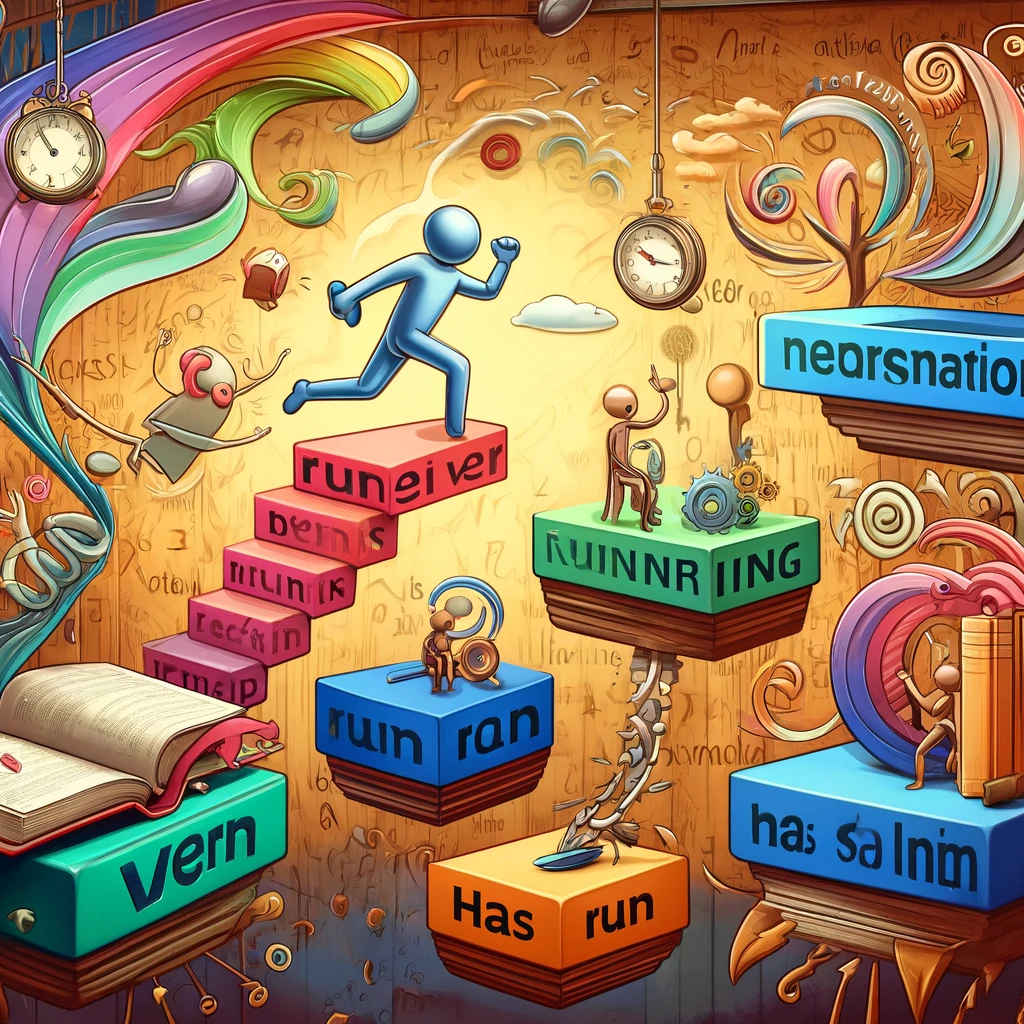
Present Tense Escape Room
Objectives:
With this activity you will solidify understanding of the present simple, present continuous, present perfect, and present perfect continuous tenses.
You will use critical thinking and problem-solving skills to decipher clues related to present tenses.
Apply present tense knowledge in simulated real-life scenarios, enhancing practical language use.
Activity Description
You will have to solve some everyday scenarios where present tenses are prominently used. Each puzzle station or digital stage is designed to test your knowledge and application of a specific present tense.
Link for the activity: Present-tenses-factory-escape-game

Video Diary Project
Objectives
Enhance Verbal Fluency: Improve your spoken English fluency by describing routines, plans, and experiences in video format.
Apply Present Tenses: Practice and demonstrate the use of present simple, present continuous, present perfect, and present perfect continuous tenses in authentic contexts.
Creative Expression: Encourage creativity and personal expression through the medium of video, allowing you to share aspects of your lives.
Listening and Analytical Skills: Develop listening skills and the ability to analyze peers’ use of present tenses through peer review.
Materials Needed
-Smartphones or Tablets
-Video Editing Apps (optional): Apps like iMovie, InShot, or ClipChamp for students who wish to edit their videos.
Project Description: Create a short video diary (2-5 minutes) discussing the following topics, applying different present tenses:
–Daily Routines (Present Simple): Talk about your typical day. Example: “I wake up at 7 am, then I have breakfast.”
–Future Plans for the Day (Present Continuous for future arrangements): Mention something you plan to do later today. Example: “I am meeting my friends after school.”
–A Recent Experience (Present Perfect): Describe something interesting that happened recently. Example: “I have just finished a great book.”
–An Ongoing Experience (Present Perfect Continuous): Discuss something you’ve been doing for a while now. Example: “I have been learning guitar for three months.”

The Present Tense Time Capsule
Objectives:
- Grammar Review and Application: Reinforce the understanding and correct usage of present simple, present continuous, present perfect, and present perfect continuous tenses through oral practice.
- Enhance Speaking Fluency: Improve your fluency and confidence in speaking by engaging in a creative and interactive activity.
- Promote Listening Skills: Develop active listening skills as you listen to and evaluate your peers’ use of present tenses.
- Encourage Creativity and Imagination: Stimulate your creativity by imagining future scenarios based on current actions or states.
Instructions:
- Introduction (10 minutes):
- You will create “time capsules” using present tense statements about your lives, predicting how current actions/states will influence their future.
- Group Formation and Brainstorming (15 minutes):
- The class will be divided into small groups (3-4 students per group). Each group receives a set of prompts and discusses their answers among themselves, practicing the use of present tenses.
- Time Capsule Creation (20 minutes):
- Prepare a short “time capsule” speech in response to the prompts, utilizing the appropriate present tense for each answer.
- Be creative and imaginative in your responses, considering how your current actions or achievements might shape your future.
- Time Capsule Presentations (30 minutes):
- Present your time capsule speeches to the group or class. After each presentation, group members can ask follow-up questions, prompting further use of present tenses.
- Class Discussion and Reflection (15 minutes)
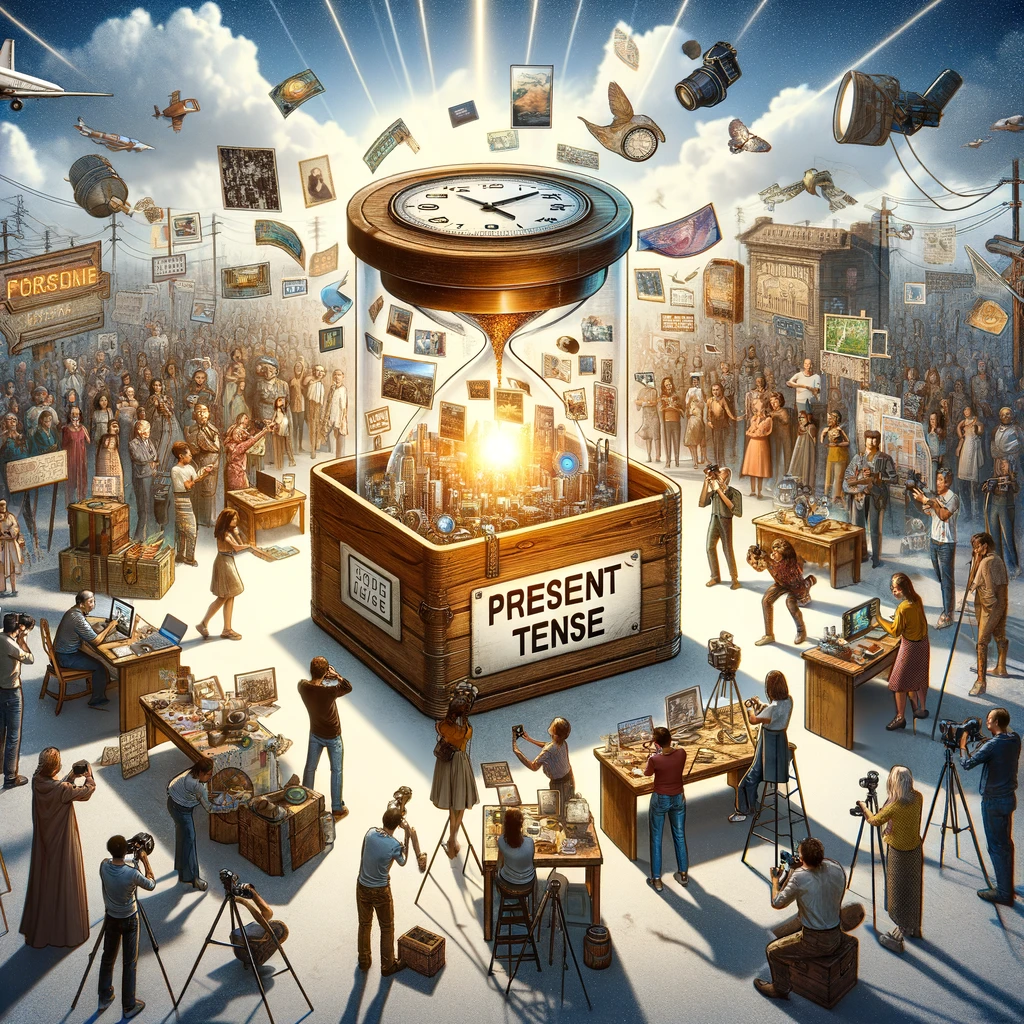
“The Time Travel Talk Show”
In this activity, you and your classmates role-play as characters from various times and scenarios, appearing as guests on a fictional talk show. Each character’s story and situation require the use of specific present tenses, allowing you to creatively apply present simple, present continuous, present perfect, and present perfect continuous tenses in your speech. Hosted either by any of your classmates or you acting as the talk show host, the activity involves interviewing these “time-traveling” guests, encouraging them to describe their lives, achievements, and experiences using the appropriate tense.
Objectives:
- Reinforce Present Tenses: Practice and reinforce the correct use of present simple, present continuous, present perfect, and present perfect continuous tenses.
- Boost Speaking Fluency: Increase your confidence and fluency in speaking through a fun and imaginative role-play scenario.
- Enhance Listening Skills: Improve listening comprehension as you pay attention to your classmates’ use of different present tenses.
- Encourage Creativity: Stimulate creativity by allowing you to invent and explore various characters and scenarios.
Materials Needed:
- Role cards with character scenarios that require the use of different present tenses.
- A “talk show” setup area in the classroom (optional).
Instructions:
- Introduction (5 minutes):
- You will role-play as guests from different times and situations, using specific present tense forms based on their role card.
- Role Card Distribution (5 minutes):
- Some role cards will be distributed randomly among you and your classmates. You’ll have a few minutes to read your role and think about how you will present your characters.
- Talk Show Begins (20-30 minutes):
- There will be a talk show host yourself. The host introduces the talk show and its unique “time-traveling” theme.
- Invite “guests” (students) to come up one at a time to be interviewed. Fully embrace their characters, using the appropriate present tense forms to answer questions and discuss their scenarios.
- The host should prepare questions that elicit the use of various present tenses, but also allow students to ask questions to each other in character.
Example Questions for the Host:
- For present simple: “What does your character usually do in their time period?”
- For present continuous: “What exciting project or event is your character currently involved in?”
- For present perfect: “What significant achievements has your character accomplished so far?”
- For present perfect continuous: “How long has your character been engaged in their current activity or mission?”

THE PAST TENSE

Learning Goals
- Understand Past Tenses: Review and understand the different past tenses, including past simple, past continuous, past perfect, and past perfect continuous.
- Differentiate Tenses: Identify the differences and similarities between these past tenses.
- Apply Past Tenses: Use past tenses accurately in various contexts through practical examples and activities.
Content
Past Simple
- Use: To describe completed actions that happened at a specific time in the past.
Structure:
- Affirmative: Subject + past form of the verb
- Example: “She visited the museum.”
- Negative: Subject + did not (didn’t) + base form of the verb
- Example: “She didn’t visit the museum.”
- Interrogative: Did + subject + base form of the verb?
- Example: “Did she visit the museum?”

Past Continuous
- Use: To describe actions that were ongoing at a specific time in the past.
Structure:
- Affirmative: Subject + was/were + present participle (verb + ing)
- Example: “She was reading a book.”
- Negative: Subject + was/were not (wasn’t/weren’t) + present participle (verb + ing)
- Example: “She wasn’t reading a book.”
- Interrogative: Was/Were + subject + present participle (verb + ing)?
- Example: “Was she reading a book?”

Past Perfect:
- Use: To describe actions that were completed before another action in the past.
Structure:
- Affirmative: Subject + had + past participle
- Example: “She had finished her homework.”
- Negative: Subject + had not (hadn’t) + past participle
- Example: “She hadn’t finished her homework.”
- Interrogative: Had + subject + past participle?
- Example: “Had she finished her homework?”

Past Perfect Continuous:
- Use: To describe actions that were ongoing up to a point in the past.
Structure:
- Affirmative: Subject + had been + present participle (verb + ing)
- Example: “She had been reading for two hours.”
- Negative: Subject + had not (hadn’t) been + present participle (verb + ing)
- Example: “She hadn’t been reading for two hours.”
- Interrogative: Had + subject + been + present participle (verb + ing)?
- Example: “Had she been reading for two hours?”

Practical Examples and Applications
- Example 1: “She had already left by the time I arrived.”
- Application: Describes an action completed before another past action.
- Example 2: “They were playing soccer when it started to rain.”
- Application: Describes an ongoing action interrupted by another action.
- Example 3: “We visited the museum last weekend.”
- Application: Describes a specific completed action in the past.
- Example 4: “He had been working at the company for five years before he got promoted.”
- Application: Describes the duration of an action before another past action.
- Example 5: “While I was reading, my brother was playing video games.”
- Application: Describes two ongoing actions happening at the same time in the past.
Additional resources
Click here to access more resources regarding past tenses
Learning Activities
Past Tense Timeline
Objective: Reinforce the understanding of the sequence of past events.
Instructions:
- You’ll receive a list of events and you will be asked to place them on a timeline.
- You must use past tenses to describe the events on the timeline.
- Example: “First, I woke up. Then, I had breakfast. After that, I went to school.”
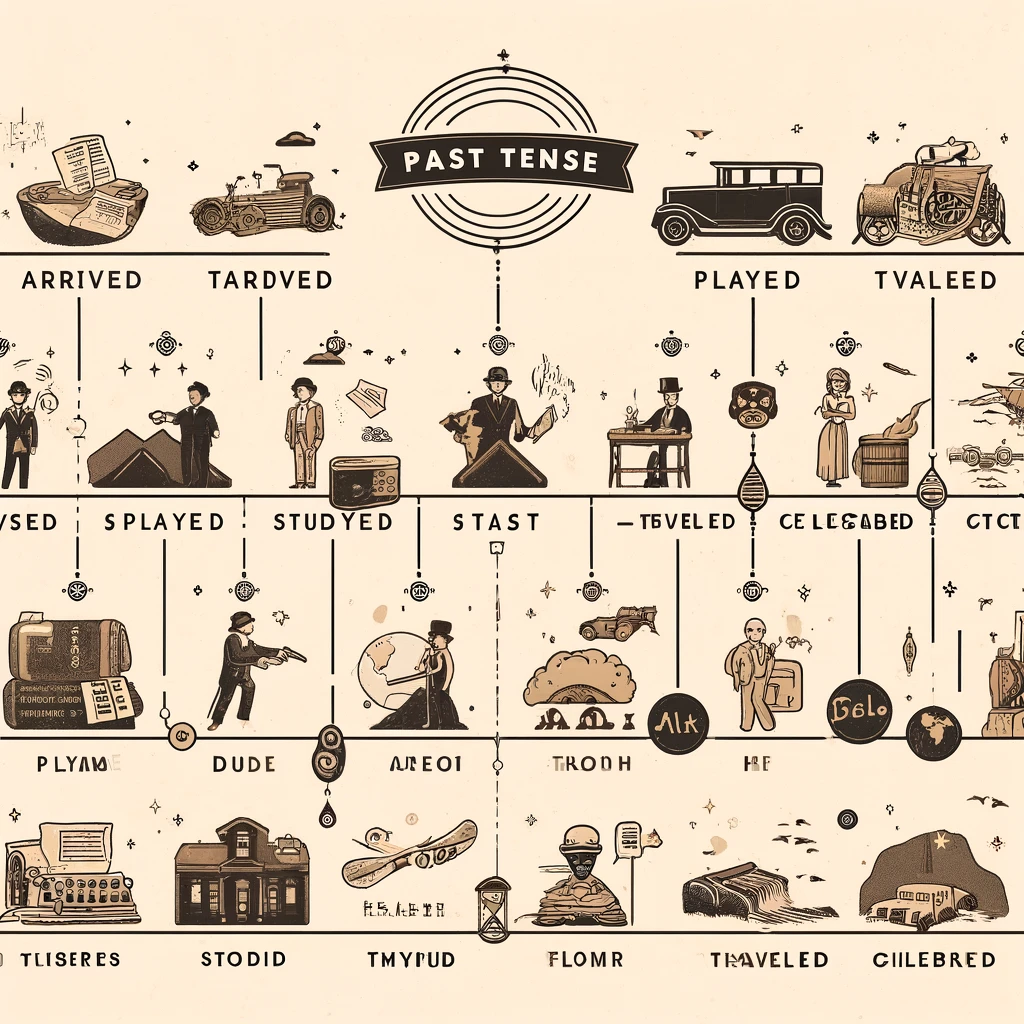
Story Reconstruction
Objective: Practice past tenses by reconstructing a story.
Instructions:
- The class will be divided into small groups.
- Each group will receive a story with sentences in the present tense.
- You will have to rewrite the story in the past tense, using appropriate past tenses.
- Example: “She is reading a book” becomes “She was reading a book.”

Role-Playing Interviews
Objective: Apply past tenses in a conversational context. Instructions:
- You will be paired up. One is the interviewer, and the other is a famous person from history.
- The interviewer asks questions about the famous person’s life, and the interviewee answers using appropriate past tenses.
- Example: “Interviewer: What did you do before you became famous? Interviewee: I had been working as a teacher.”

PERSONALITY ADJECTIVES
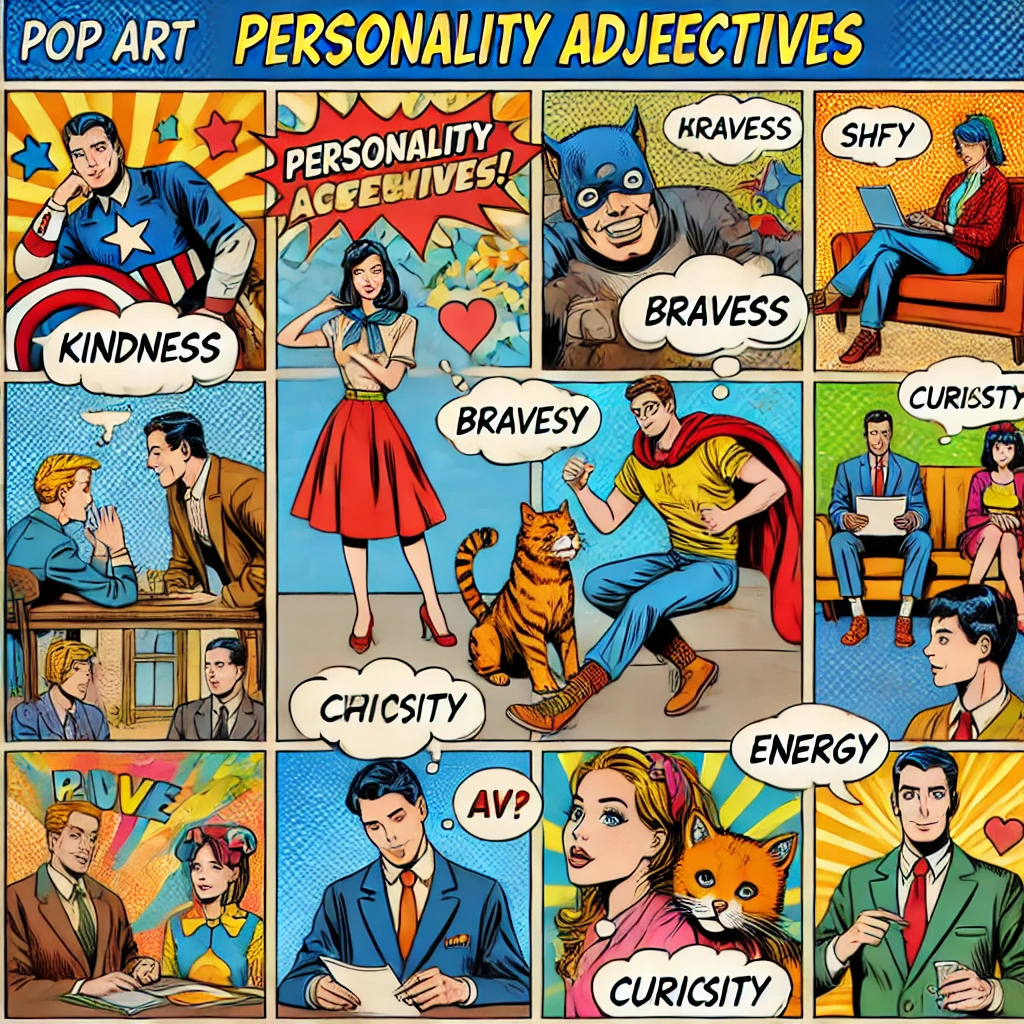
Objectives
- Expand Vocabulary: Broaden your understanding and use of personality adjectives.
- Self-Discovery and Peer Understanding: Facilitate self-reflection and empathy by describing personal traits and recognizing those in classmates.
- Interactive Engagement: Employ interactive activities that make learning memorable and enjoyable.
- Creative Expression: Creatively apply new vocabulary in various contexts.
Content
Personality adjectives are descriptive words that are used to characterize or describe a person’s inherent traits, qualities, or behaviors. These adjectives help to provide a deeper understanding of a person’s character and are often used to express judgments, perceptions, and opinions about others.
Why Use Personality Adjectives?
- Descriptive Precision: They allow you to describe people more precisely.
- Enhanced Communication: Improve your ability to communicate your thoughts and observations about others.
- Literary Enrichment: Enrich your writing by adding depth to characters in stories.
- Social Interaction: Facilitate social interactions by understanding and discussing different personality traits.
Types of Personality Adjectives
Personality adjectives can be broadly categorized into positive and negative traits.
Positive Personality Adjectives
- Ambitious: Having a strong desire for success or achievement.
- Compassionate: Feeling or showing sympathy and concern for others.
- Diligent: Showing careful and persistent effort in work or duties.
- Generous: Willing to give more of something, such as money or time, than is strictly necessary or expected.
- Gregarious: Fond of company; sociable.
- Optimistic: Hopeful and confident about the future.
- Resilient: Able to withstand or recover quickly from difficult conditions.
- Sincere: Free from pretense or deceit; genuine.
- Sympathetic: Feeling, showing, or expressing sympathy.
- Versatile: Able to adapt or be adapted to many different functions or activities.
Negative Personality Adjectives
- Arrogant: Having an exaggerated sense of one’s own importance or abilities.
- Impulsive: Acting or done without forethought.
- Pessimistic: Tending to see the worst aspect of things or believe that the worst will happen.
- Stubborn: Having or showing dogged determination not to change one’s attitude or position on something.
- Tactless: Having or showing a lack of skill and sensitivity in dealing with others or with difficult issues.
How to Use Personality Adjectives
- In Descriptions:
- Simple Sentences: “She is ambitious and always sets high goals for herself.”
- Compound Sentences: “He is gregarious, and he loves attending parties.”
- In Comparisons:
- Comparative Forms: “She is more diligent than her brother.”
- Superlative Forms: “He is the most generous person I know.”
- In Contexts:
- Stories: “The protagonist was a resilient woman who overcame many obstacles.”
- Dialogue: “John, you are so compassionate; I appreciate your help.”
- In Judgments and Opinions:
- Positive: “I admire how optimistic she is about the future.”
- Negative: “His arrogant attitude makes it difficult to work with him.”
- In Professional Settings:
- Resumes: “A diligent and versatile professional with a proven track record.”
- Performance Reviews: “She is a sincere and compassionate team member.”
- In Social Interactions:
- Compliments: “You are very thoughtful to bring me this gift.”
- Constructive Criticism: “Sometimes, being a bit less stubborn might help you see other perspectives.”
Learning Activities
Personality Adjective Match
Objectives:
- Expand Vocabulary: Learn and reinforce a wide range of personality adjectives.
- Enhance Understanding: Understand the meanings and appropriate usage of different personality adjectives.
- Apply Knowledge: Match personality adjectives to their corresponding definitions or scenarios.
- Activate Prior Knowledge: Recall and apply previously learned vocabulary in a fun and interactive way.
Instructions:
- Preparation:
- Materials: Create two sets of cards – one set with personality adjectives and the other with corresponding definitions or scenarios.
- Setup: Display the adjectives on one side of the board and the definitions or scenarios on the other side.
- Activity (10 minutes):
- Introduction: Briefly explain the purpose of the activity and review a few examples of personality adjectives with the class.
- Matching Game: You will work in pairs or small groups. Each group will be given a set of cards with adjectives and another set with definitions or scenarios.
- Task: Match each adjective to its correct definition or scenario. Discuss within your group why each match is appropriate.
- Class Review: After completing the matching task, we will review the answers together as a class. You will explain your reasoning for each match.
- Discussion (5 minutes):
- Sharing: Share some of the matched pairs with the class. Discuss any challenging adjectives and why certain definitions or scenarios fit best.
- Clarification: Your teacher will provide additional explanations or examples if needed to ensure clear understanding.

Personality Mosaic
Objective: Create a visual representation of your personalities using the newly learned adjectives.
Activity: Select personality adjectives that you feel represent yourselves and create a “Personality Mosaic” on paper or digitally. You can illustrate or decorate your mosaics to reflect the meaning of the adjectives.
Personal Interest Integration: Incorporate your hobbies, favorite books, movies, or songs as examples or themes in your mosaics to personalize their work.
A Personality Mosaic is a creative and visual representation of an individual’s personality traits using a combination of words, images, colors, and sometimes textures or materials. It’s a form of art that captures the complexity and multifaceted nature of one’s character by piecing together various personality adjectives and related imagery to form a cohesive whole. The concept aligns with the understanding that personality is not one-dimensional but a blend of many different attributes, much like how individual tiles or pieces come together to form a mosaic.
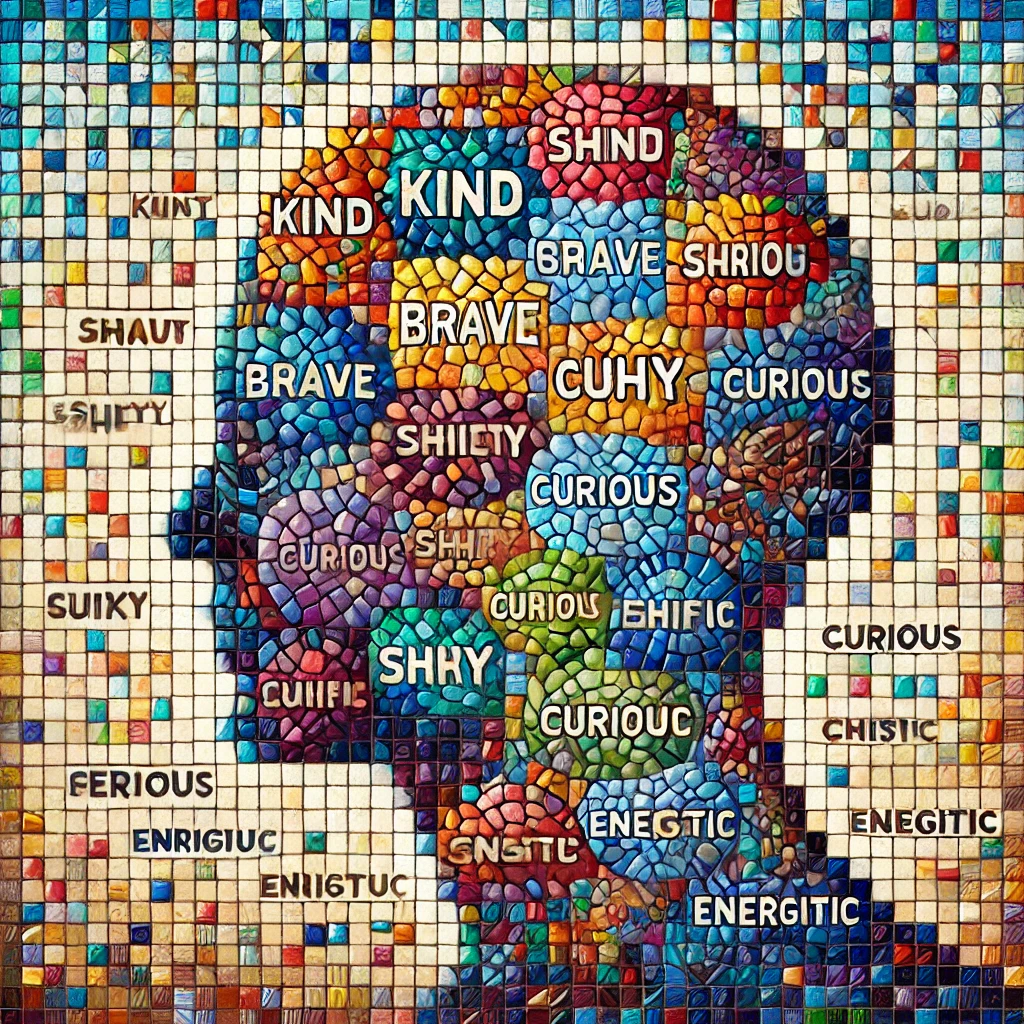
‘Who Am I?’ Interactive Gallery Walk
Objective: Use personality adjectives to guess classmates based on descriptive paragraphs.Activity: Each student writes a short paragraph describing themselves or a fictional character using the adjectives learned. Paragraphs are displayed anonymously around the room. Students walk around, read the descriptions, and guess who or what is described.Gamification Element: Use “Krugs” as a reward for correct guesses and insightful descriptions, encouraging thoughtful participation.
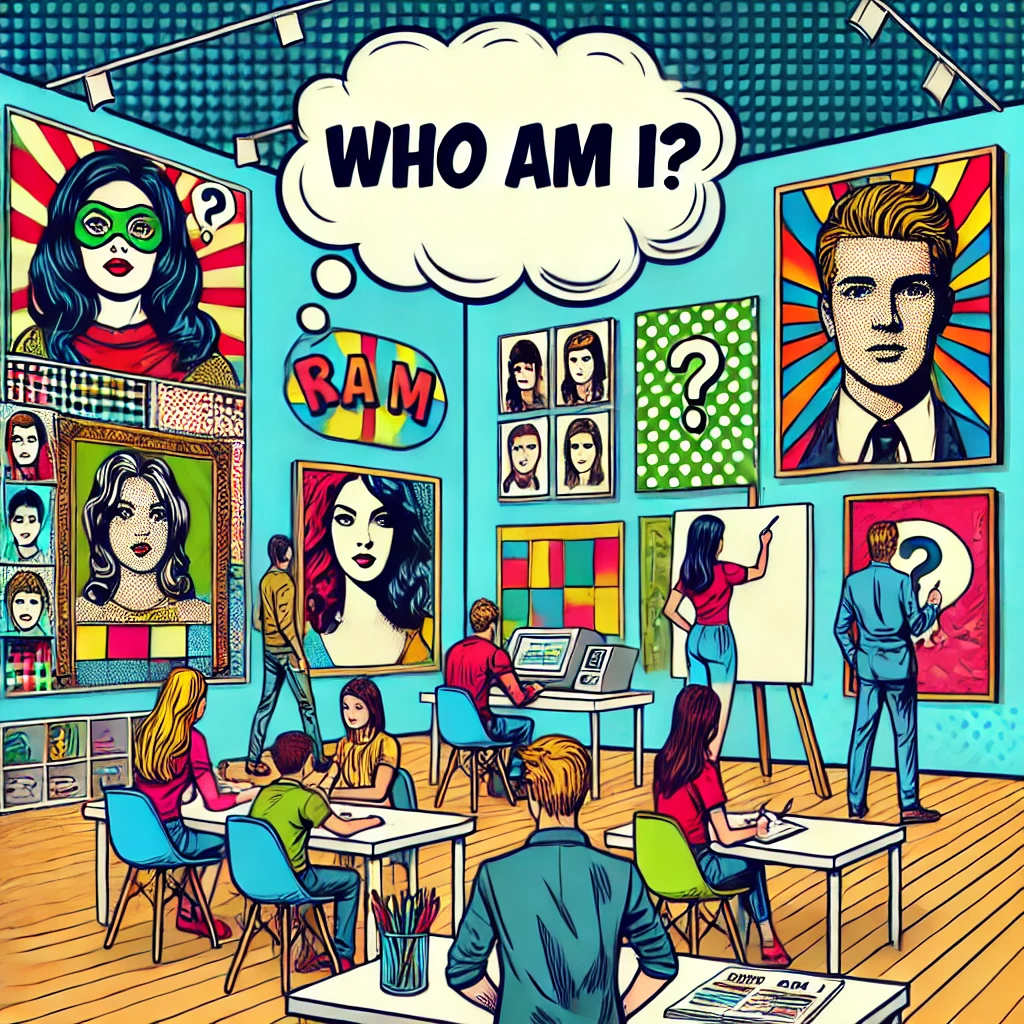
Modal Verbs For Abilities And Possibilities
Have you ever wondered how to express what you can do or what might happen? Modal verbs are your go-to tools for talking about abilities and possibilities in English. In this lesson, you’ll learn how to use modal verbs like “can,” “could,” “may,” and “might” to describe what you can do and what could happen in different situations. With visual aids and interactive activities, you’ll gain confidence in using these modal verbs to communicate more effectively.
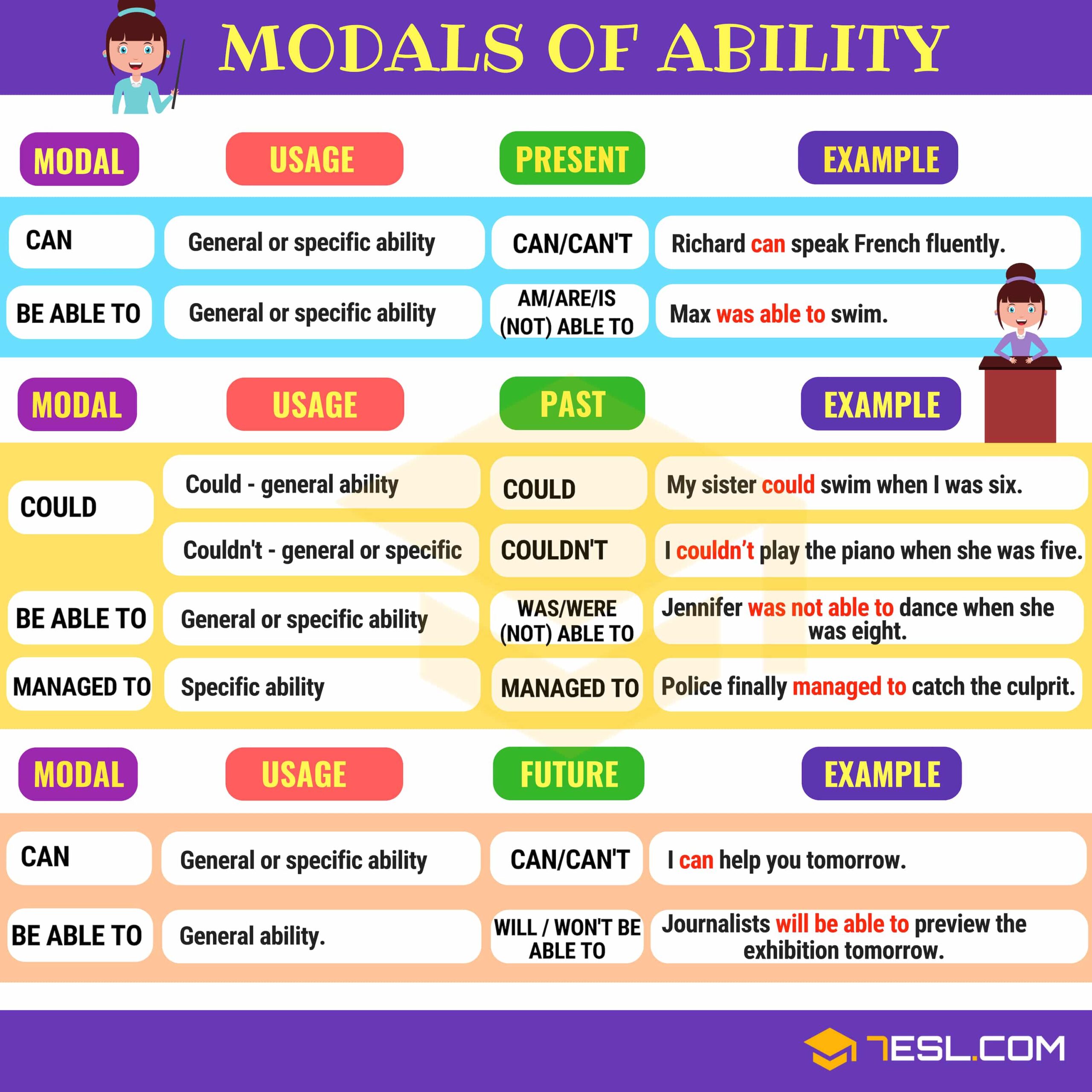
Explanation and Uses
1. Modal Verbs for Abilities:
- “Can”:
- Form: Subject + can + base verb (e.g., “I can swim.”)
- Use: To express a present ability or skill.
- “Could”:
- Form: Subject + could + base verb (e.g., “She could play the piano when she was young.”)
- Use: To express a past ability or a polite request.
2. Modal Verbs for Possibilities:
- “May”:
- Form: Subject + may + base verb (e.g., “It may rain later.”)
- Use: To suggest a possibility or probability.
- “Might”:
- Form: Subject + might + base verb (e.g., “He might come to the party.”)
- Use: To indicate a smaller possibility or uncertainty.
In the following video you will have a quick masterclass regarding this topic:
More About Modal Verbs
Dive into the interesting differences and nuances of formal and informal English:
Learning Activities
Engage in the following activities to practice what you’ve learned throughout this lesson:
“Future and Past Abilities Debate”
- Objective: Discuss and argue using “can,” “could,” “may,” and “might.”
- Instructions: Divide the class into two groups. One group argues about future possibilities using “may” and “might” (e.g., “We might travel abroad next year.”), while the other argues about past abilities using “could” (e.g., “I could run a marathon last year.”). Each group presents their arguments and responds to questions from the opposing group.
Scenario Simulation Game
- Objective: Apply modal verbs in realistic situations.
- Instructions: Create a set of realistic scenarios where students need to use modal verbs to express abilities and possibilities (e.g., “Describe what you might do if you won a scholarship,” “Explain what you could do to improve your skills in a sport.”). Students role-play these scenarios in pairs or small groups, using the appropriate modal verbs. Evaluate their usage and provide constructive feedback.
COMPARATIVE AND SUPERLATIVE ADJECTIVES
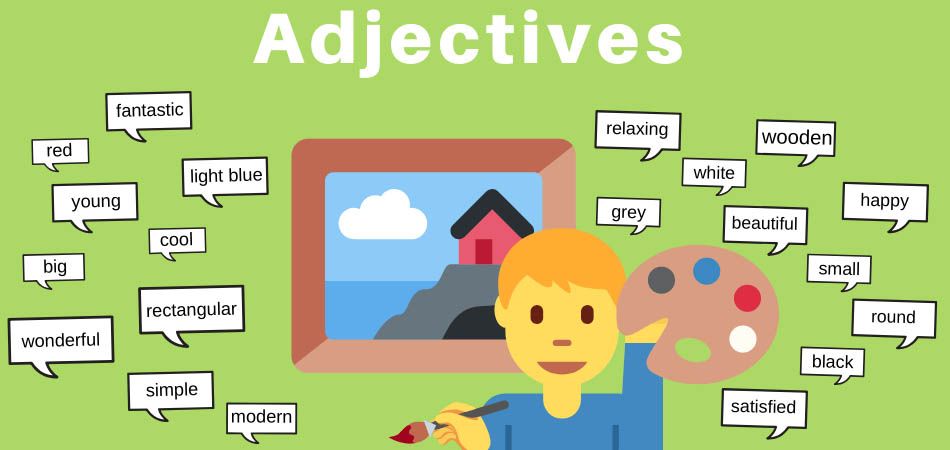
Comparative and superlative adjectives are used to compare one or more nouns to each other, showing differences in degree or quality.
Content
Comparative Adjectives
- Definition: Comparative adjectives are used to compare two things. They show that one thing has a higher or lower degree of a certain quality than another.
- How They’re Formed:
- For short adjectives (one syllable or two syllables ending in -y), add
-erto the end of the adjective.- Example: Tall becomes taller.
- Example: Happy becomes happier.
- For longer adjectives (two or more syllables), use “more” before the adjective.
- Example: Beautiful becomes more beautiful.
- For short adjectives (one syllable or two syllables ending in -y), add
- Examples:
- John is taller than Mark. (comparison between two people)
- This book is more interesting than that one. (comparison between two books)
Superlative Adjectives
- Definition: Superlative adjectives are used to compare three or more things. They show that one thing has the highest or lowest degree of a certain quality among a group.
- How They’re Formed:
- For short adjectives, add
-estto the end of the adjective.- Example: Tall becomes tallest.
- Example: Happy becomes happiest.
- For longer adjectives, use “most” before the adjective.
- Example: Beautiful becomes most beautiful.
- For short adjectives, add
- Examples:
- John is the tallest in the class. (comparison among all the students)
- This is the most interesting book I’ve ever read. (comparison among all books read)
Key Rules to Remember
- Spelling Changes:
- If the adjective ends in -y, change the y to i before adding -er or -est.
- Happy → Happier → Happiest
- If the adjective is short and ends with a consonant-vowel-consonant (CVC) pattern, double the final consonant before adding -er or -est.
- Big → Bigger → Biggest
- If the adjective ends in -y, change the y to i before adding -er or -est.
- Irregular Adjectives:
- Some adjectives have irregular comparative and superlative forms and don’t follow the usual rules.
- Good → Better → Best
- Bad → Worse → Worst
- Some adjectives have irregular comparative and superlative forms and don’t follow the usual rules.

Usage
- Use comparative adjectives to compare two items, often with “than”:
- This chair is more comfortable than that one.
- Use superlative adjectives to show the extreme or highest quality in a group:
- She is the smartest student in the class.
Understanding comparative and superlative adjectives helps in describing differences and extremes, making comparisons clear and effective.
Learning Activities
Adjective Relay Race
The class will be divided into teams. One by one, the members of each team must run from the start of the line to the other end, where there will be a list of adjectives for each team. They must pick an adjective, and write the correct comparative and superlative forms on a board before running back to tag the next teammate. The first team to correctly complete all their adjectives wins.
Superlative and Comparative Scavenger Hunt
You will be given a list of items/people with certain characteristics (e.g., “someone taller than you,” “the smallest shoe in the room”). Everyone must search the classroom for these items and describe them using the appropriate comparative or superlative adjective. For example, “This shoe was the smallest one I could find.”. Whoever finishes their list first wins.
Comparative and Superlative Adjective Storytelling
You will work in small groups to create a short story or dialogue that uses a list of comparative and superlative adjectives provided by the teacher. For example, “Once upon a time, in the tallest tower in the kingdom, there lived the bravest knight…” Every group will then share their stories with the class and the most creative one will win Krugs for the creators.
